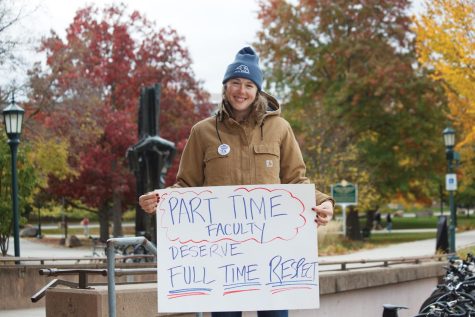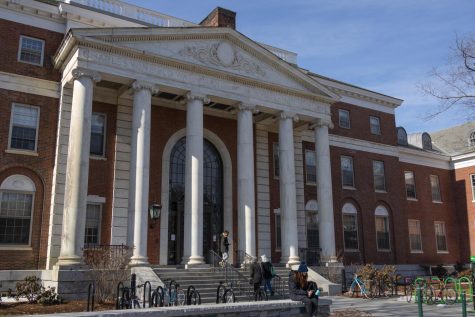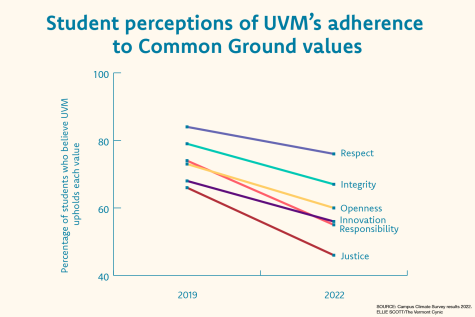Post-grad salary and debt by the numbers
October 21, 2015
Paying off student loans is a concern of many students.
“I probably will be in debt. I think I’ll be okay but not looking too great,” said first-year, Cameron Lafreniere. “The future is, I don’t know. I’d rather not think about it. I know it’s going to end up hitting me in the face eventually.”
First-year Anastasia Tsekeris agreed that national student debt is a concern.
“I just think it’s a reality that everyone is kind of like ‘oh it’s awful but you’ve got to do it,’” Tsekeris said.
ProPublica, a non-profit public interest journalism group, recently put this issue under the microscope.

In their “Debt by Degrees” piece, ProPublica used data from the College Scorecard to compare and contrast the costs of different universities, including UVM.
The College Scorecard is a list of data put together by the U.S. Department of Education regarding colleges and universities in America.
It provides information such as the costs of attending each university and how much financial aid is provided, according to the U.S. Department of Education.
ProPublica used these datasets to derive several statistics about students who rely on federal loans to afford the cost of higher education. The statistics included the median federal debt, graduation rates and median income after graduation by students who went to college with federal aid.
Nearly half of UVM’s undergraduates, about 47 percent, took out federal loans in 2013, according to ProPublica.
First-year Gillian Cone said national student debt is an issue, but she isn’t too worried.
“I’m going to be in debt but it’s not going to be like a worst case situation,” Cone said. “It’s tragic but I’ve gotten enough financial aid that I am not upset about it.”
The median annual income of students who received federal loans at UVM, 10 years after entering school, in 2011 is $44,000, according to ProPublica.
About 76 percent of UVM’s students graduate within six years of entering school. For those graduating with debt, the median number of dollars they owe is $21,894, according to ProPublica.
The average student debt of a four-year college student is $26,830, according to the Office of Federal Student Aid, an office of the U.S. Department of Education.
““[Student debt is] just a terrible situation,” Lafreniere said. “It’s pretty tragic.”
People look at student debt differently than they should, said Marie Johnson, director of student financial services at UVM.
“It’s an investment in themselves,” Johnson said. “You are giving yourself a leg up against other people.”
Student financial services tries to help students find out if they can afford a four-year plan at UVM.
Factors that determine how much financial aid a student gets includes family income, the number of kids in college and the number of people in the family, Johnson said.
“Loans are a reality for a good portion of students,” Johnson said. “What we try and advise them to do is to look at what do they need to take out. We have an obligation to put a certain amount in the student’s award.”
“In order to retain students we need to make sure we’re providing financial aid to needy students to minimize student debt,” he said.
















